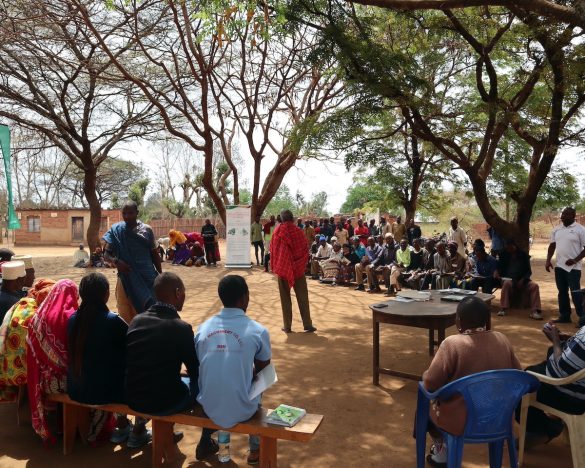Safe or a deadly poison? Determining the levels of harmful ‘mycotoxins’ in key staples in Tanzania
Warning: Trying to access array offset on value of type bool in /home/africarising/public_html/wp-content/plugins/slideshare/slideshare.php on line 162
Warning: Trying to access array offset on value of type bool in /home/africarising/public_html/wp-content/plugins/slideshare/slideshare.php on line 165
Mycotoxins are deadly chemicals produced by naturally-occurring fungi which contaminate key staples crops while in the field and in storage and adversely affect the health of human and livestock. They thrive when crops suffer drought or insect attack in the field, are harvested when conditions are wet and stored in places that are warm and moist with limited free-flowing air and attacked by insects.
One of the well-known and most deadly mycotoxin is aflatoxin which causes liver cancer, suppresses the body’s immune system, stunts growth of children and in cases of acute poisoning, leads to death.
In international trade, food is routinely tested for mycotoxin contamination and when levels are higher than those recommended shipments are rejected. However, foods from farmers’ and in local and regional markets are unregulated, consumed by the majority of the population, fed to animals and therefore potentially threatening the health of millions of people and animals.
This quick-win project entitled ‘Mycotoxin contamination in Tanzania: quantified the problem in maize and cassava in households and markets’ the first such comprehensive study ever to determine the prevalence of mycotoxin contamination.
“The control at farm level involves sorting out the grains and removing those that look contaminated. Unfortunately the signs of contamination are not always visible, particularly for processed food such as maize flour and peanut butter, and therefore consumers could unknowingly be ingesting the poisonous compounds,” said Fen Beed, a plant pathologist with the International Institute of Tropical Agriculture (IITA) and the research team leader.
The research team, drawn from included Ministry of Agriculture, Food Security and Cooperatives (MAFC), Sokoine University of Agriculture (SUA) Tanzania pesticide Research institute (TPRI) and the Tanzania Food and Drug agency (TFDA), collected maize and cassava samples from 28 districts in the country. They were pre-tested for aflatoxin contamination at IITA and those that were found positive were sent to University of Natural Resources and life sciences (BOKU) in Vienna, for a thorough analysis for over 200 poisonous chemicals produced by a range of fungi(toxic metabolites).
They also collected data on the levels of mycotoxins awareness and the practices of the farmers whose samples were collected to identify the practices that contribute to the contamination and regional hotpots. The level of awareness was found to be very low and the project distributed over 3000 factsheets on mycotoxins in Swahili to farmers and extension workers.
According to Beed, the project has created a strong partnership to quantify the presence of the potentially life-threatening poisons in the crops being promoted for the next phase of the Africa RISING.
“Through this research, we will begin to know the scale of the problem and justify targeted interventions to control mycotoxin contamination in hot spot areas as well as identify which practices lead to high levels of contamination which need to be addressed.”
He says for the next phase of Africa RISING, it is imperative to capitalise on the trust created between the partners and to qualify and quantify mycotoxin levels in action sites targeted for intensive interventions to improve the diversification and intensification of farming systems for maize and grain legumes.
Download the project report
(Article by Catherine Njuguna)
More early win’ projects
The Africa RISING program comprises three linked research-for-development projects, funded by the USAID Feed the Future Initiative, and aiming to sustainably intensify mixed farming systems in West Africa (Southern Mali and Northern Ghana), the Ethiopian Highlands and East and Southern Africa (Tanzania, Zambia and Malawi).
To produce some short-term outputs and to support the longer term objectives of the projects, in 2012 Africa RISING funded several small, short-term projects in each of the regions. More information.




